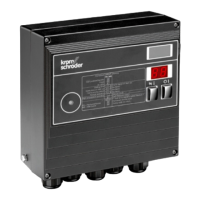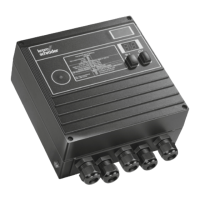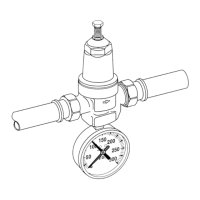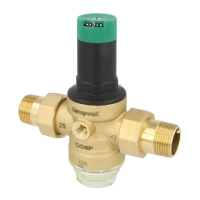BCU 460, BCU 465 · Edition 11.19 42
t
L
= A059
t
M
= A056
p
Z
>
p
u
2
+
–
OK
V1
V1
V1
OK
V2
V1
V2
p
Z
>
p
u
2
+
–
t
L
= A059
t
M
= A056
V2
V2
t
L
= A059
t
M
= A056
+
–
V2
OK
p
Z
>
p
u
2
V1
OK
V1
V2
V2
V2
p
Z
>
p
u
2
+
–
t
L
= A059
t
M
= A056
V1
V1
p
Z
>
p
u
2
+
–
PZ
V1 V2
p
z
p
u
/2
Program A Program B
START
Valve proving system
6.1.2 Program sequence
The tightness test starts by checking the external pres-
sure switch. If pressure p
Z
> p
u
/2, programA starts.
If pressure p
Z
< p
u
/2, programB starts, see page43
(Program B).
Program A
Valve V1 opens for the opening time t
L
set in parame-
terA059. V1 closes again. During the measurement time
t
M
, the tightness control checks the pressurep
Z
between
the valves.
If pressurep
Z
is less than half the inlet pressurep
u
/2,
valveV2 is leaking.
If pressure p
Z
is greater than half the inlet pressurep
u
/2,
valveV2 is tight. Valve V2 is opened for the set opening
time t
L
. V2 closes again.
During the measurement time t
M
, the tightness control
checks the pressurep
Z
between the valves.
If pressurep
Z
is greater than half the inlet pressurep
u
/2,
valveV1 is leaking.
If pressurep
Z
is less than half the inlet pressurep
u
/2,
valveV1 is tight.
The tightness test can only be performed if the pres-
surep
d
downstream of V2 is around atmospheric pres-
sure and the volume downstream of V2 is at least 5×
higher than the volume between the valves.

